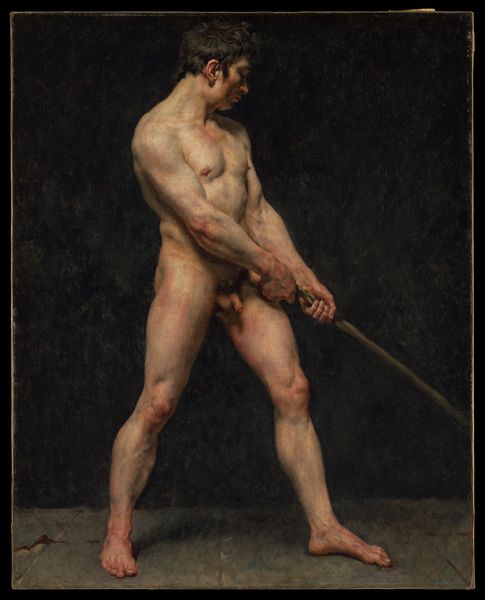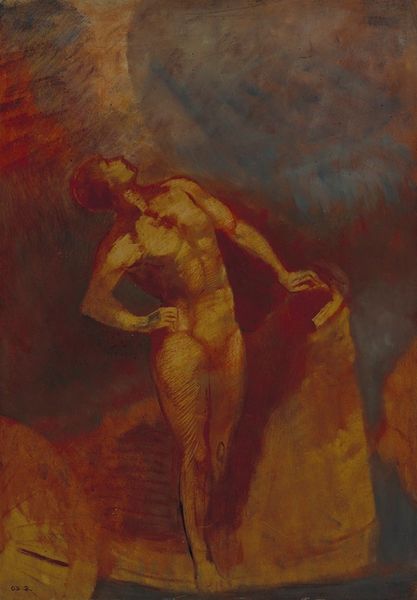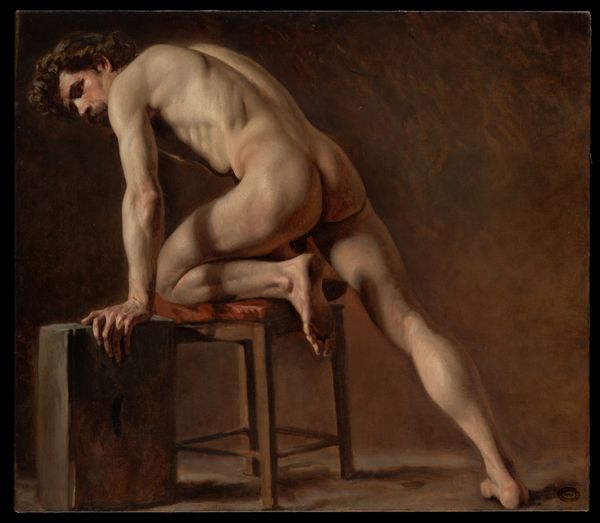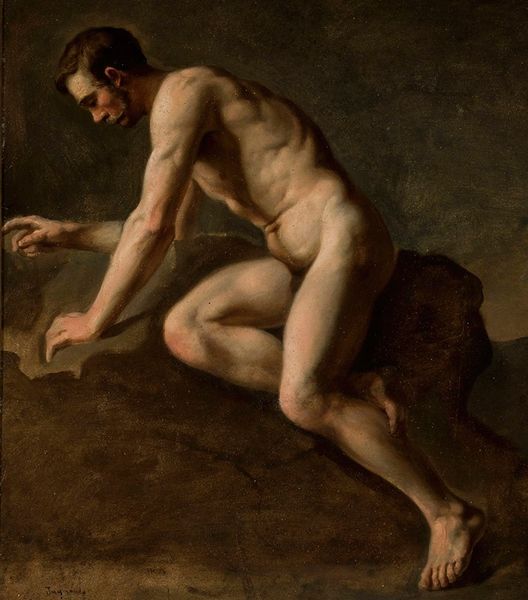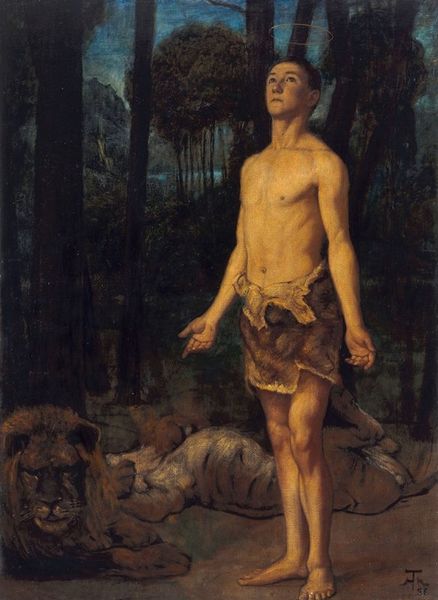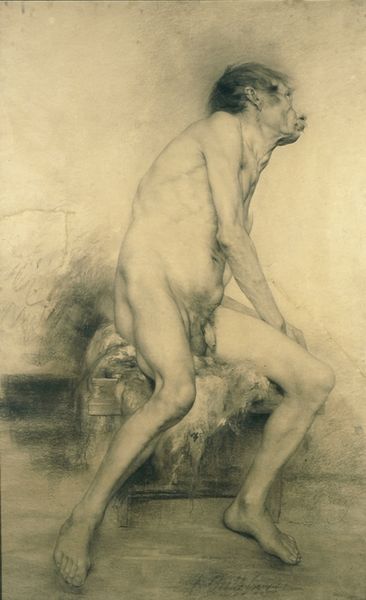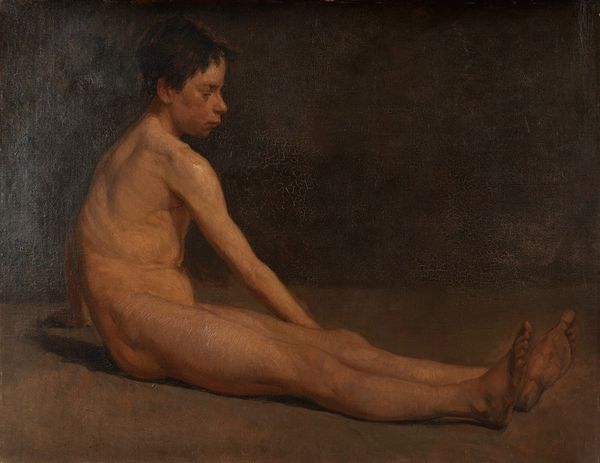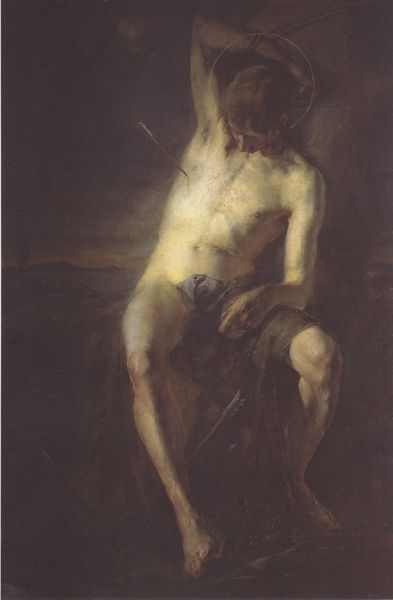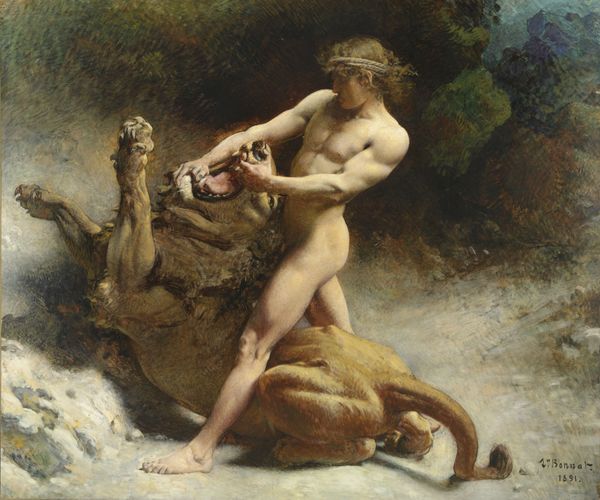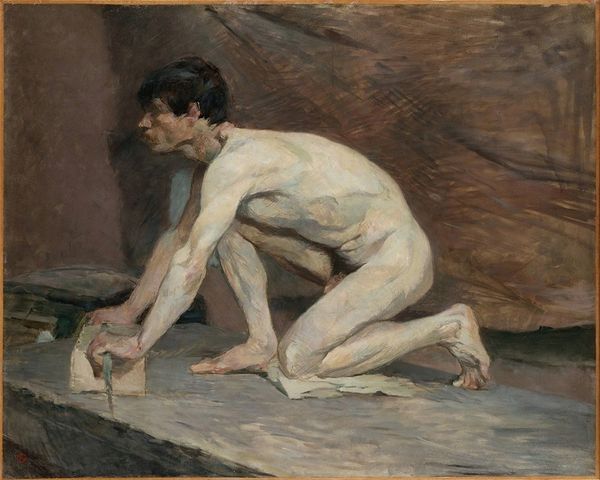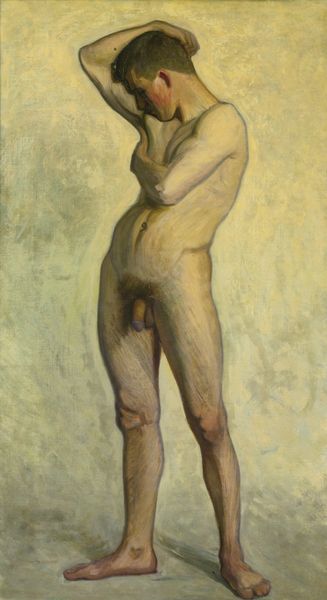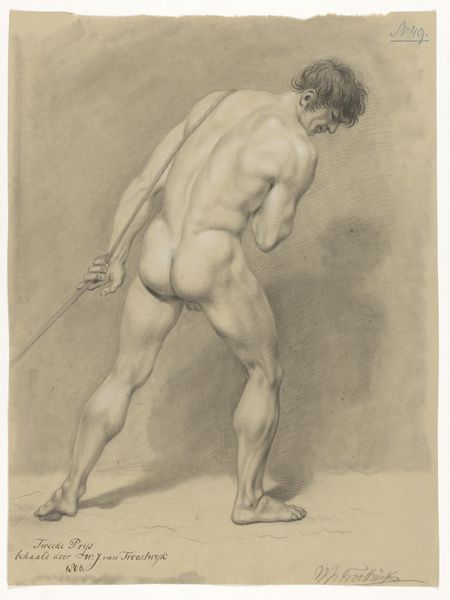
painting, oil-paint, canvas
#
allegory
#
painting
#
oil-paint
#
figuration
#
canvas
#
history-painting
#
nude
#
realism
Dimensions: 203.5 cm (height) x 172 cm (width) (Netto)
Editor: We’re looking at "Cain," an 1891 oil on canvas by Julius Paulsen, currently at the SMK. It depicts a nude man in apparent anguish, with a glowing line emanating from a hand above him. There’s a strong sense of shame or divine punishment pervading the scene. How do you interpret this work? Curator: That's a great initial reaction. For me, Paulsen’s "Cain" goes beyond simply illustrating a biblical story. Consider the late 19th century - a time of immense social and political upheaval. The figure of Cain, marked and ostracized, speaks to the marginalization and demonization of those deemed "other" by societal power structures. What does the nude figure and harsh judgment evoke in the context of burgeoning social critiques and challenges to religious dogma at the time? Editor: I hadn't thought about the social context of its creation so directly. The nudity now makes me think of vulnerability, stripped bare by both God and society. It feels very much like an allegory of the suffering imposed by institutions. Curator: Exactly. And let's consider the glowing mark. How might we understand it in the context of the rise of scientific racism and physiognomy during that era? Editor: So, maybe it’s about how easily judgment and condemnation are physically ‘inscribed’ onto bodies based on subjective interpretation. Curator: Precisely. Paulsen is less concerned with religious literalism, and more engaged with questions of power, prejudice, and the societal construction of "good" and "evil." Understanding art from this period necessitates this intersectional approach. Editor: It’s a lot darker when viewed through that lens. I originally saw religious guilt, but it really expands outward when you consider historical prejudices. Curator: Indeed, by connecting art history with contemporary theory, we expose the lasting power of these systems in shaping our present. There's so much to unpack here. Editor: I’ll definitely be thinking about the historical context when looking at works from this era now! Thanks.
Comments
No comments
Be the first to comment and join the conversation on the ultimate creative platform.
